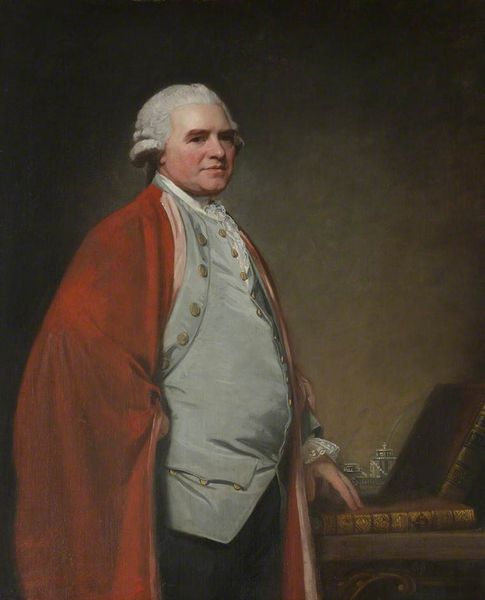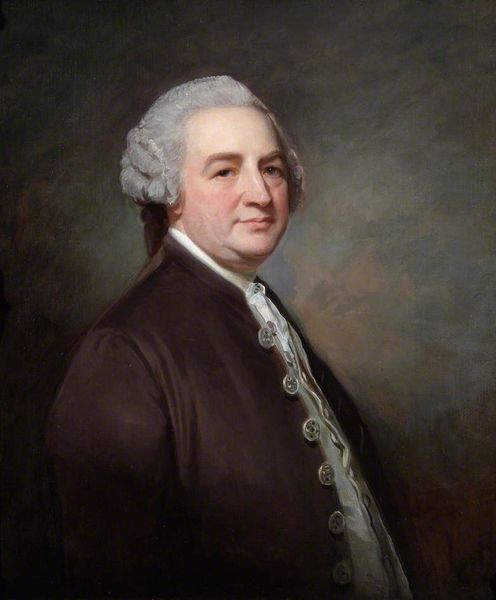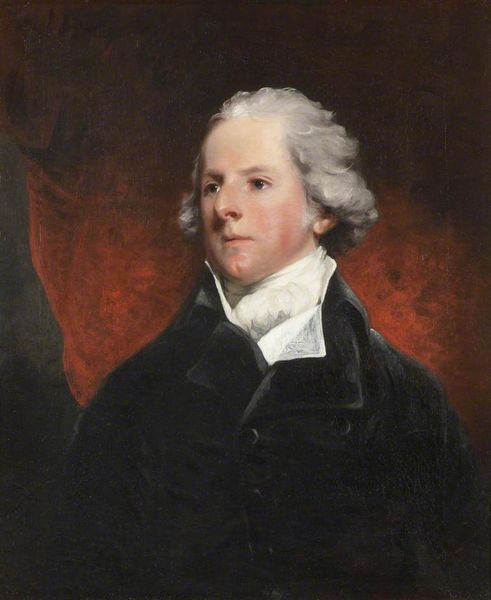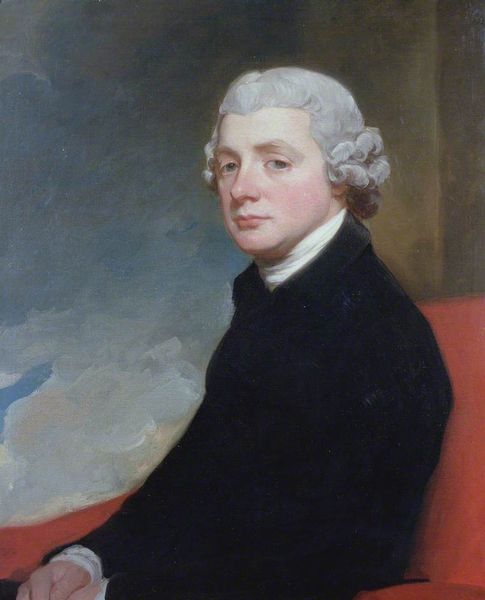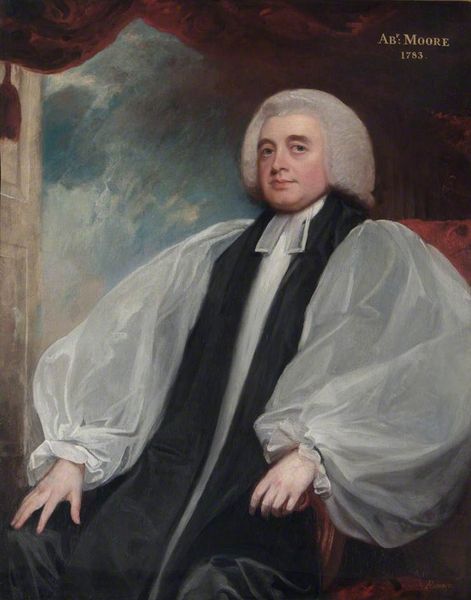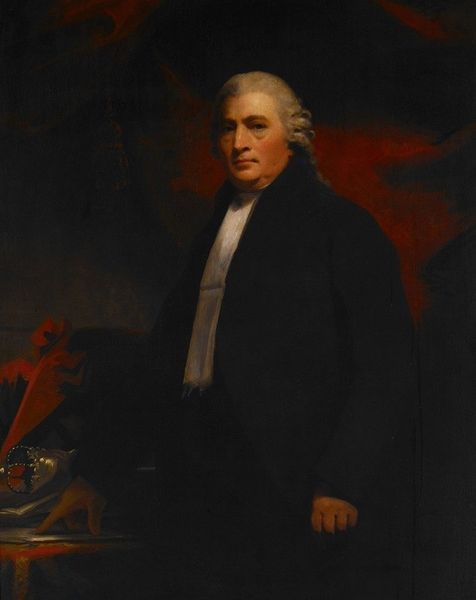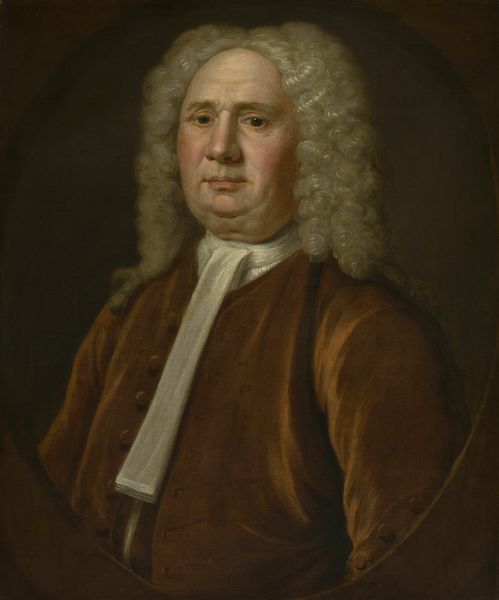
Copyright: Public domain
Curator: Looking at George Romney's oil painting, completed in 1780, one immediately sees a figure of prominence. What is your first take on this image? Editor: A crimson tide. That cloak dominates, framing a face caught between authority and… I’m not sure. Vulnerability, perhaps? It feels quite theatrical. Curator: The subject here is James Macpherson, a rather controversial figure in the literary world of the late 18th century. The vividness you noted in the cloak contrasts powerfully with the subject's pale face and powdered wig. Editor: Controversial how? And what statement might the artist be trying to make? The heavy use of red suggests power and importance. Yet there is a tension in Macpherson's expression, almost like a mask. Did Romney intend for viewers to feel this dissonance? Curator: Macpherson was famous – or perhaps infamous – for his "translations" of Ossianic poetry. He claimed to have discovered ancient Gaelic epics, igniting both patriotic fervor and accusations of forgery. Romney’s composition choices play a role; this bold cloak and reserved, yet complicated expression captures a public figure in a time of massive change. The layering effect of the symbolic objects—the cloak of prominence laid on the face of uncertainty. What remains constant over time, or throughout one's life? The eyes of a leader, maybe? Or are we the masters of illusion that deceive people for hundreds of years, after the subject died and is nothing but a mere memory. The scale feels important. It asserts a particular vision of the man. Editor: Exactly, the theatricality I noticed earlier is even stronger now, with Macpherson cast as the lead actor. It highlights the importance of his social image and the expectations society has of their artists or people with authority, at least on a symbolic stage. He really knew how to manipulate those themes to his advantage and the advantage of his "community". But in turn it created a long and arduous ethical debate around his image. It prompts one to reflect on authenticity, fabrication, legacy. Is there such thing as originality, and whose role is to dictate the direction a society will undertake, a community will embark upon? Is Romney's rendering itself authentic or merely constructed for the elite’s consumption? It almost challenges us to confront the illusions we create, then and now. Curator: This has opened new views on what to make of such representation of such figure, especially from our historical standpoint. There is an ongoing interplay of power and doubt embedded here, I agree.
Comments
No comments
Be the first to comment and join the conversation on the ultimate creative platform.
